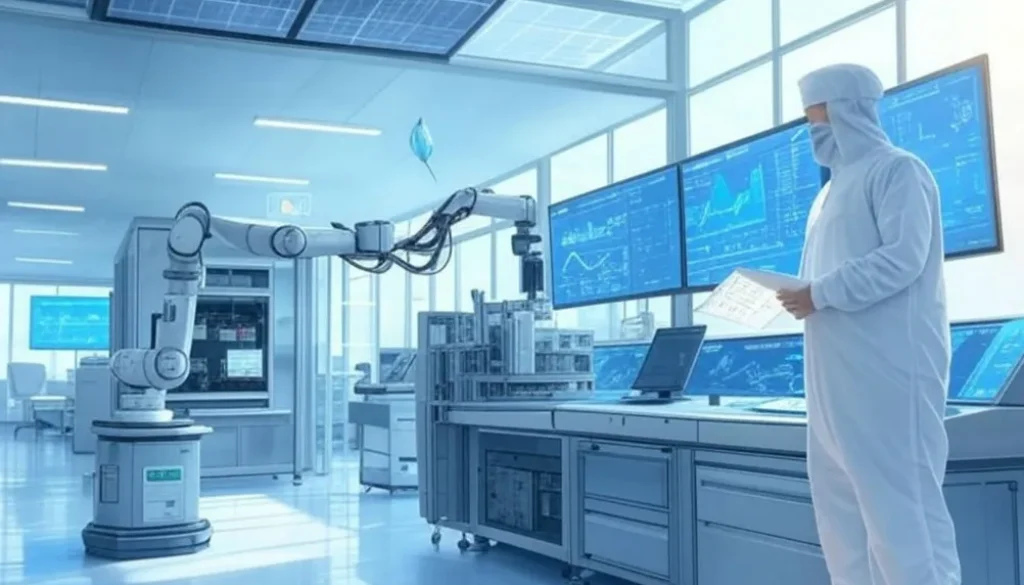Manufacturing Assets in Pharma
Introduction: The Critical Role of Asset and Facility Management in Pharma
In the high-stakes world of pharmaceutical manufacturing, where patient safety and regulatory compliance are paramount, effective management of manufacturing assets and facility operations is non-negotiable. From ensuring equipment reliability to maintaining pristine cleanrooms, these processes directly impact product quality, operational efficiency, and adherence to strict standards set by regulatory bodies like the FDA and EMA. With the industry facing challenges such as unplanned downtime, rising costs, and the shift toward personalized medicine, optimizing asset and facility management in pharma has never been more critical. This article explores the strategies, technologies, and best practices that pharmaceutical companies can adopt to enhance reliability, ensure compliance, and drive sustainability.
Why Manufacturing Assets Matter in Pharmaceutical Production
Manufacturing assets—such as tablet presses, mixers, filling machines, and HVAC systems—are the backbone of pharmaceutical production. Their reliability directly affects production schedules, product quality, and compliance with Good Manufacturing Practices (GMP). Unplanned downtime due to equipment failure can be catastrophic, leading to lost batches, financial losses, and even patient safety risks. A 2012 fungal meningitis outbreak caused by a compounding pharmacy’s maintenance failure resulted in 48 deaths, highlighting the dire consequences of neglect The Powers Company.
Traditional maintenance approaches often fall short, either being overly conservative (leading to unnecessary costs) or reactive (risking productivity). Predictive and prescriptive maintenance (PPM) offers a solution by using machine learning to detect equipment failures weeks in advance, allowing for targeted interventions. This approach not only reduces downtime but also ensures equipment operates within GMP standards, as emphasized by CHA Consulting CHA Asset Management.
Facility Management: Ensuring Safety, Compliance, and Efficiency
Facility management in pharma encompasses a wide range of functions, from janitorial services to security and compliance management. Cleanliness is non-negotiable, especially in cleanrooms where even a speck of dust can contaminate a batch. Janitorial teams use specialized protocols to maintain GMP standards, preventing cross-contamination and ensuring product integrity Allegiance Industries. Security is equally critical, as facilities house valuable assets like proprietary formulas and high-value inventory. Robust measures such as access control and surveillance protect against theft and unauthorized access Allegiance Industries.
Compliance with regulations like the FDA’s Current Good Manufacturing Practices (CGMP) is a cornerstone of facility management. CGMP ensures proper design, monitoring, and control of manufacturing processes, requiring comprehensive documentation and regular inspections FDA CGMP Facts. Facility managers must also prioritize worker safety, implementing hygiene practices to minimize exposure to hazardous substances FF Services.
The Role of Technology in Transforming Asset and Facility Management
Digital transformation is revolutionizing pharma manufacturing asset management. Manufacturing Execution Systems (MES) connect equipment on the factory floor, providing real-time monitoring and improving production efficiency. Since their adoption in 1997, MES systems have helped companies comply with FDA regulations like 21 CFR Part 11 by enabling electronic records and signatures Aegex Technologies. Asset performance management (APM) software, such as Datastream 7i, uses data analytics to optimize maintenance, calibration, and inventory control, ensuring compliance and reducing costs BioPharm International.
The “facility of the future” leverages smart manufacturing technologies like robotics, AI, and IoT to create autonomous, self-correcting production systems. These facilities can respond to market demands with agility, particularly for personalized and gene-based therapies, though regulatory and legacy constraints pose challenges Pharma Manufacturing. Continuous manufacturing, which integrates production steps into a seamless process, offers improved efficiency over traditional batch methods, as noted by Katana Katana MRP.
Addressing Challenges: Downtime, Costs, and Workforce Skills
Unplanned downtime remains a significant challenge, costing manufacturers up to $129 million annually due to equipment failures Llumin. Predictive maintenance can mitigate these losses, but many companies still operate under reactive models, risking contamination and non-compliance. The high capital costs of biopharmaceutical facilities, coupled with plant consolidation trends, further intensify cost pressures, requiring strategic facility management to optimize returns on assets PharmTech.
Workforce skills are another hurdle, with nearly 60% of maintenance workers lacking the training needed to optimize assets. Training in maintenance fundamentals, electrical control, and leadership development is essential to improve overall equipment effectiveness (OEE) and ensure operational excellence The Powers Company.
Sustainability and Safety: A Growing Priority in Pharma Facilities
Facility managers are increasingly focusing on sustainability in pharma manufacturing, implementing energy-efficient practices and adhering to standards like Leadership in Energy and Environmental Design (LEED). These initiatives reduce environmental impact while aligning with global sustainability goals FF Services. Safety is also paramount, with strict hygiene protocols protecting workers from hazardous substances and preventing contamination. Stainless steel electric tuggers, for example, are used in cleanrooms to ensure safe material handling without risking corrosion or contamination MasterMover.
Conclusion: Building a Future-Ready Pharma Industry
Effective manufacturing assets and facility management in pharma is essential for ensuring operational efficiency, regulatory compliance, and patient safety. By adopting predictive maintenance, leveraging digital tools like MES and APM, and prioritizing sustainability and safety, pharmaceutical companies can overcome challenges like downtime and cost pressures. Investing in workforce training and embracing smart manufacturing technologies will further position the industry for a future-ready approach, capable of meeting the demands of personalized medicine and global supply chains. The path forward requires a proactive, technology-driven strategy to maintain the highest standards in pharmaceutical manufacturing.
